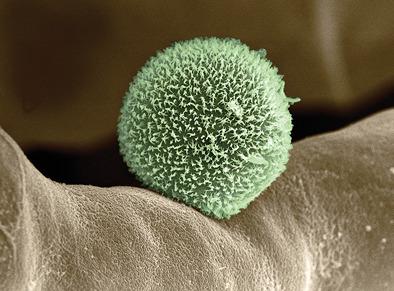当前位置:
X-MOL 学术
›
Small Methods
›
论文详情
Our official English website, www.x-mol.net, welcomes your
feedback! (Note: you will need to create a separate account there.)
Harvesting Microalgae for Food and Energy Products
Small Methods ( IF 10.7 ) Pub Date : 2020-07-16 , DOI: 10.1002/smtd.202000349 Julian A. Liber 1 , Abigail E. Bryson 1 , Gregory Bonito 1 , Zhi‐Yan Du 2, 3
Small Methods ( IF 10.7 ) Pub Date : 2020-07-16 , DOI: 10.1002/smtd.202000349 Julian A. Liber 1 , Abigail E. Bryson 1 , Gregory Bonito 1 , Zhi‐Yan Du 2, 3
Affiliation

|
Microalgae are promising biological factories for diverse natural products. Microalgae tout high productivity, and their biomass has value in industrial products ranging from biofuels, feedstocks, food additives, cosmetics, pharmaceuticals, and as alternatives to synthetic or animal‐derived products. However, harvesting microalgae to extract bioproducts is challenging given their small size and suspension in liquid growth media. In response, technologic developments have relied upon mechanical, chemical, thermal, and biological means to dewater microalgal suspensions and further extract bioproducts. In this review, the effectiveness and considerations were evaluated for the implementation of microalgae harvesting techniques. Nonbiological methods—filtration, chemical, electrical, and magnetic nanoparticle flocculation, centrifugation, hydrothermal liquefaction, and solvent‐based extraction, as well as biological coculture‐based methods are included. Recent advances in coculture algae‐flocculation technologies that involve bacteria and fungi are summarized. These produce a variety of natural bioproducts, which show promise in fuel and food additive applications. Furthermore, this review addresses the developments of genetic tools and resources to optimize the productivity and harvesting of microalgae or to provide new bioproducts via heterologous expression. Finally, a glimpse of future biotechnologies that will converge to produce, harvest, and process microalgae using sustainable and cost‐effective methods is offered.
中文翻译:

收获食品和能源产品的微藻
微藻是有前途的生物工厂,可以生产各种天然产物。微藻具有很高的生产率,其生物质在工业产品中具有价值,这些工业产品包括生物燃料,原料,食品添加剂,化妆品,药品,以及作为合成或动物源产品的替代品。但是,鉴于微藻的体积小且悬浮在液体生长培养基中,因此收获微藻以提取生物产品具有挑战性。作为回应,技术发展依靠机械,化学,热学和生物学手段来使微藻悬浮液脱水并进一步提取生物产物。在这篇综述中,评估了微藻收获技术实施的有效性和考虑因素。非生物方法-过滤,化学,电和磁性纳米颗粒的絮凝,离心,包括水热液化,基于溶剂的萃取以及基于生物共培养的方法。总结了涉及细菌和真菌的共培养藻类絮凝技术的最新进展。它们产生多种天然生物产品,在燃料和食品添加剂应用中显示出希望。此外,本综述探讨了遗传工具和资源的发展,以优化微藻的生产力和收获或通过异源表达提供新的生物产品。最后,介绍了未来的生物技术,这些技术将融合为使用可持续且具有成本效益的方法生产,收获和加工微藻的方法。总结了涉及细菌和真菌的共培养藻类絮凝技术的最新进展。这些产生多种天然生物产品,在燃料和食品添加剂应用中显示出希望。此外,本综述探讨了遗传工具和资源的发展,以优化微藻的生产力和收获或通过异源表达提供新的生物产品。最后,介绍了未来的生物技术,这些技术将融合为使用可持续且具有成本效益的方法生产,收获和加工微藻的方法。总结了涉及细菌和真菌的共培养藻类絮凝技术的最新进展。这些产生多种天然生物产品,在燃料和食品添加剂应用中显示出希望。此外,本综述探讨了遗传工具和资源的发展,以优化微藻的生产力和收获或通过异源表达提供新的生物产品。最后,介绍了未来的生物技术,这些技术将融合为使用可持续且具有成本效益的方法生产,收获和加工微藻的方法。这篇综述探讨了遗传工具和资源的发展,以优化微藻的生产力和收获或通过异源表达提供新的生物产品。最后,介绍了未来的生物技术,这些技术将融合为使用可持续且具有成本效益的方法生产,收获和加工微藻的方法。这篇综述探讨了遗传工具和资源的发展,以优化微藻的生产力和收获或通过异源表达提供新的生物产品。最后,介绍了未来的生物技术,这些技术将融合为使用可持续且具有成本效益的方法生产,收获和加工微藻的方法。
更新日期:2020-07-16
中文翻译:

收获食品和能源产品的微藻
微藻是有前途的生物工厂,可以生产各种天然产物。微藻具有很高的生产率,其生物质在工业产品中具有价值,这些工业产品包括生物燃料,原料,食品添加剂,化妆品,药品,以及作为合成或动物源产品的替代品。但是,鉴于微藻的体积小且悬浮在液体生长培养基中,因此收获微藻以提取生物产品具有挑战性。作为回应,技术发展依靠机械,化学,热学和生物学手段来使微藻悬浮液脱水并进一步提取生物产物。在这篇综述中,评估了微藻收获技术实施的有效性和考虑因素。非生物方法-过滤,化学,电和磁性纳米颗粒的絮凝,离心,包括水热液化,基于溶剂的萃取以及基于生物共培养的方法。总结了涉及细菌和真菌的共培养藻类絮凝技术的最新进展。它们产生多种天然生物产品,在燃料和食品添加剂应用中显示出希望。此外,本综述探讨了遗传工具和资源的发展,以优化微藻的生产力和收获或通过异源表达提供新的生物产品。最后,介绍了未来的生物技术,这些技术将融合为使用可持续且具有成本效益的方法生产,收获和加工微藻的方法。总结了涉及细菌和真菌的共培养藻类絮凝技术的最新进展。这些产生多种天然生物产品,在燃料和食品添加剂应用中显示出希望。此外,本综述探讨了遗传工具和资源的发展,以优化微藻的生产力和收获或通过异源表达提供新的生物产品。最后,介绍了未来的生物技术,这些技术将融合为使用可持续且具有成本效益的方法生产,收获和加工微藻的方法。总结了涉及细菌和真菌的共培养藻类絮凝技术的最新进展。这些产生多种天然生物产品,在燃料和食品添加剂应用中显示出希望。此外,本综述探讨了遗传工具和资源的发展,以优化微藻的生产力和收获或通过异源表达提供新的生物产品。最后,介绍了未来的生物技术,这些技术将融合为使用可持续且具有成本效益的方法生产,收获和加工微藻的方法。这篇综述探讨了遗传工具和资源的发展,以优化微藻的生产力和收获或通过异源表达提供新的生物产品。最后,介绍了未来的生物技术,这些技术将融合为使用可持续且具有成本效益的方法生产,收获和加工微藻的方法。这篇综述探讨了遗传工具和资源的发展,以优化微藻的生产力和收获或通过异源表达提供新的生物产品。最后,介绍了未来的生物技术,这些技术将融合为使用可持续且具有成本效益的方法生产,收获和加工微藻的方法。











































 京公网安备 11010802027423号
京公网安备 11010802027423号